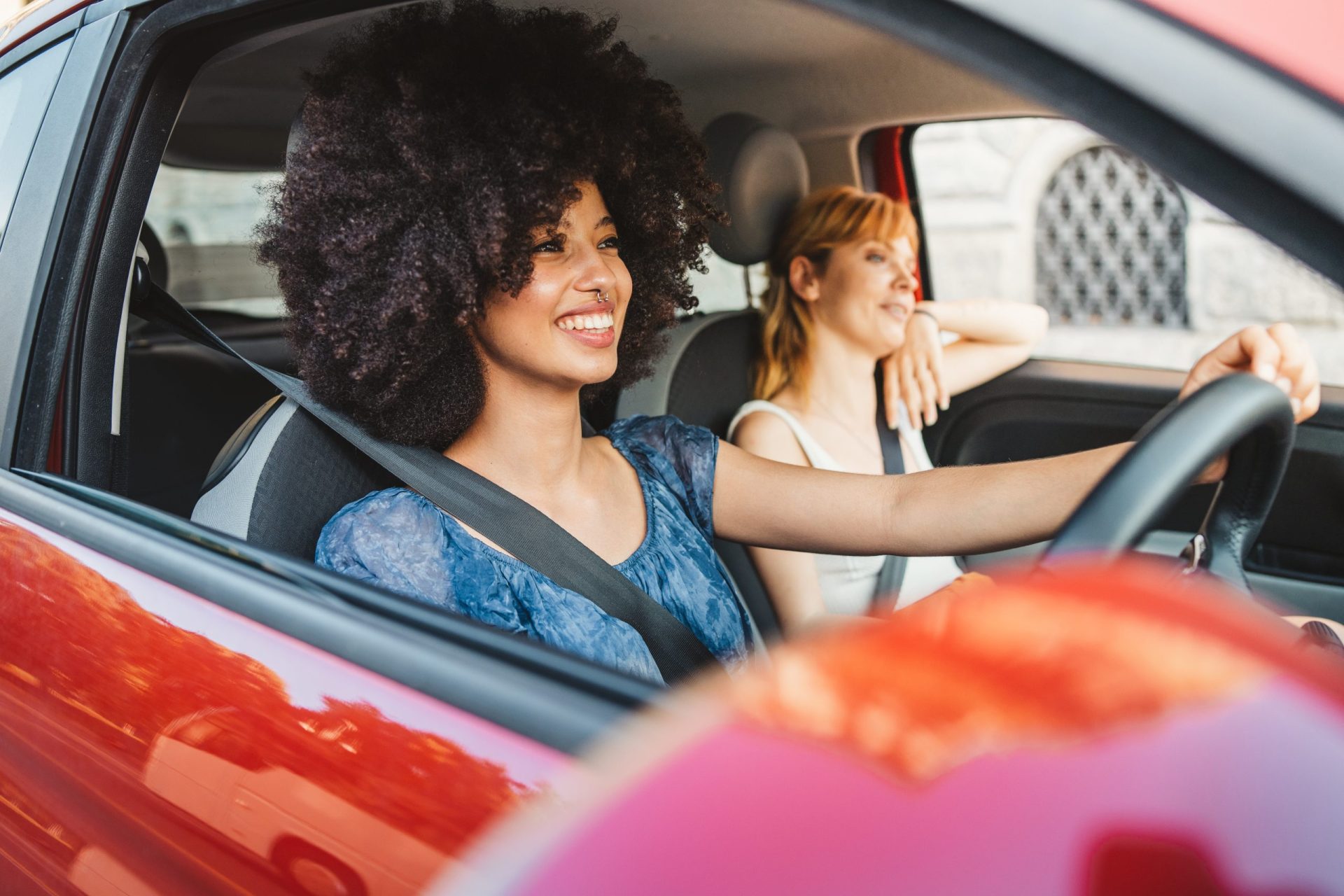
Should I Buy A New Or Used Car?
Should you buy a new or used car? We break down costs, depreciation, insurance, and reliability to help you make the best choice.
The summer months can come with warmer weather, road trips and outdoor activities. But driving in the summer sun can also present some new challenges. Make sure when driving that you are prepared before you get out and about this summer.
You may not think there will be any problems when driving in the sun, as it is usually dry and clear. However, bright sun can cause problems with vision, overheating and make for busy roads. As part of the Highway code (rule 237) you need to be safe when driving in hot weather.
We want to give you some help with driving in the summer sun to stay safe on the roads and enjoy the weather! Even in summer the British weather can be unpredictable so check our guide to driving in all weather!
When driving on sunny days you may find that it is too bright to see clearly, which can be unsafe. This can be because of the sun positioning, glare from surfaces or how bright it is.
If you are driving during sunrise or sunset, the sun is typically lower in the sky, and can be directly in your line of sight. On a clear summer’s day, glare can make it very hard to see the road ahead. Visibility can also worsen when light is reflected from cars, buildings, puddles, or other reflective surfaces.
This can all be very distracting and take your attention off the road, especially if glare happens suddenly. The sun being in your eyes for a prolonged period can also cause problems with your vision and cause eye strain. This can lead to headaches. This is not safe when you are on the road and trying to see and pay attention to driving.

In order to prevent this, it is important to bring sunglasses on your journey. This will keep your eyes safe and help with your focus. If you require prescription glasses for driving, prescription sunglasses are recommended, or you can wear sunglasses over your normal glasses. Also, you can use your sun visor in the car to block out the sun. It may also be helpful to get window sunshades to protect your passengers in the summer.
When you are driving in the sun you should try to keep more distance between you and other drivers. Doing this can prevent glare from other cars. When you are driving close to cars you may find the sun reflecting from their mirrors into your eyes, by keeping your distance you can prevent this.
You should make sure your windscreen is clean as this can reduce visibility even further if you cannot see out clearly. The sun can also make dirt on the windscreen more obvious and obstruct your vision.
If you are driving in the sun and find you cannot find a way to see clearly, it may be best to pull over and wait until you have better visibility.
Another problem when driving in the sun can be the heat. Temperatures can rise significantly in the summer which can make driving uncomfortable.
In the summer you might find your car is extremely hot when you first get in. With dark interiors absorbing the sun it can take a while to cool down. This can be quite distracting when you are driving as you begin to focus on your discomfort instead of the road.
Overheating can cause headaches, fatigue, and distractions. When driving for a prolonged period you also run the risk of getting sunburnt which can be painful and make it hard to concentrate.
To deal with these issues when driving in the summer make sure you are making use of your car’s features! Turn on the air conditioning, roll down the windows and keep your doors open before you start driving. This can help to cool down the inside of your car.
To prevent a hot car, you can try parking in an enclosed space such as a garage or parking lot. This protects your car from absorbing the sun. There are also sun shields you can put over your windows to stop sun getting into your car. By doing this your car will not be as overwhelmingly hot before you start driving and you can get on the road quicker.
Make sure you are looking after yourself too! Take a break if you are feeling unwell and take some time to cool down. Apply sun cream before you drive in the sun to prevent sunburn. Also, make sure your car is packed with a bottle of cold water to stay hydrated. You may even want to bring one cold bottle of water and a bottle you have kept in the freezer; this will slowly melt and keep the water cold for your journey.
If you are travelling with pets, leaving pets in a hot car puts the welfare of the animal in danger, which could cause illness or death. Make sure to keep a window open for pets in the car, or leave them at home on hot days.

You may find in the summer months the roads are busier. This is because more people are getting out and taking time off work. Also, since it is the summer holidays, families may be taking their kids out. This can make driving a little harder with more delays and tricky hazards on the road.
Check up on local traffic news and plan your journey accordingly. It could be best to stay away from main roads that are frequently used and choose alternative routes that may be quieter.
The streets can often be busier too! So, you will need to pay more attention to pedestrians when you are driving. Pay extra attention at crossings, corners, and built-up shopping areas where you may find pedestrians walking out into the road. Since familiar areas may be busier than normal, it may be harder to see when pedestrians are stepping out into the road, so stay alert!
During the summer months your tyres can receive more damage than usual. Hot roads can cause your rubber tyres to become softer and more prone to damage. In the UK, temperatures do not usually get high enough for tyres to melt, but in hotter climates melting tyres can happen!
Be sure you check tyres before and after driving in the hot summer sun and get them repaired or changed when needed.
Sun and heat can also cause car paint to fade and crack. This will happen after prolonged sun exposure after 5-10 years. If you have a preowned car, you may be more likely to see sun damage to the paint.
To prevent sun damage, you can try to park indoors away from the sun, or in more shaded areas, for example under trees. To further help maintain your paint, you may wish to consider regularly washing and waxing your car.
The above also applies to the car interior. Prolonged periods of sun can cause leather and plastic to crack and fabric to fade. You can help to look after the interior of your car by covering your windscreen when parked in the sun.
In conclusion, driving during the summer months can bring new challenges and obstacles for new and experienced drivers alike. Reduced visibility caused by bright sunlight can be dangerous and cause eye strain. It is important to bring sunglasses, keep a safe distance from other vehicles, and keep your windscreen clean to prevent glare. Additionally, the heat during summer can make driving uncomfortable and cause fatigue. Drivers should make use of their car’s features, like air conditioning and sun shields to prevent overheating. Moreover, planning your journey ahead of time, checking traffic news, and being extra careful around pedestrians are essential when driving on busier roads in summer. It is crucial to take care of yourself and your car during the hot summer months to ensure safe and enjoyable driving experiences.
Commonly asked questions about driving safely in the summer
It depends on the specific regulations of the driving test provider in your area. In general, sunglasses can be worn during a driving test if they do not impair your ability to see clearly. If you are unsure, it is best to check with the driving test provider beforehand.
Having headlights on during a sunny day can help increase your visibility to other drivers, especially in areas with a lot of glare or shadow. Headlights can help other drivers see your vehicle more easily, which can also reduce the risk of accidents.
On a summer day, it is a good idea to bring sunscreen, a hat, sunglasses, a bottle of water, and a first aid kit. Additionally, it may be helpful to bring a sunshade for the windshield to help keep the car cooler.
To cool down inside your car, you can try turning on the air conditioning, opening the windows, or using a fan. You can also park in a shaded area or use a sunshade to keep the car cooler.
Driving during a heatwave can be safe as long as you take the necessary precautions to stay cool and hydrated. It is important to keep the car well-ventilated, take breaks to cool down, and drink plenty of water to avoid heat exhaustion or heat stroke. It is also a good idea to avoid driving during the hottest parts of the day if possible.
You will be logged out in seconds. Do you want to stay signed in?